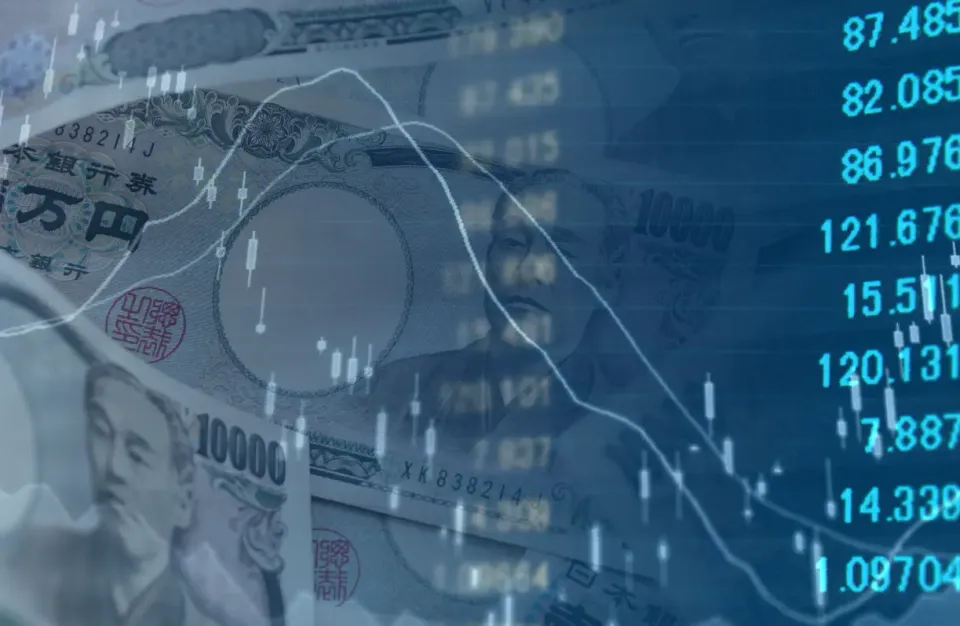BOJ to Spoil Crypto Rally?
Bank of Japan is the last major central bank staying with an ultra-easy monetary policy, and there are reasons to expect a policy change. Will it spoil the current crypto rally?
Why It Matters
Decades of an ultra-easy monetary stance have turned Japanese funds into big investors in the global market since domestic assets had near-zero yields. After bursting the stock market and real estate bubble of 1985-1990, Japan entered a long period of low rates. The Bank of Japan reduced rates to zero in the late 1990s and engaged in quantitative easing in the 2000s, sticking to an ultra-easy monetary policy for more than 2 decades.
Japan’s Overnight Rate (Unsecured Overnight Call Rate TONAR)

There is no precise figure representing Japanese investments abroad, but I saw an estimate by a major investment bank that private Japanese investors held abroad about $100 billion of equity and several hundred billions of fixed income (mostly US Treasuries and USD-denominated investment grade bonds). This estimate of private investments seems plausible, as Japanese public investments abroad (i.e., foreign currency reserves) are even bigger and are the second largest in the world.
Countries and territories with the largest foreign exchange reserves
* Most of Russia’s reserves are blocked due to Ukraine invasion
Public investments are managed by the central bank and so are not sensitive to domestic interest rates, but private investments do depend on domestic rates. If there is a pivot to normal domestic rates, the global markets may suffer due to Japanese investors’ outflows back home. Given crypto’s correlation with long-term real yields and high sensitivity to global liquidity, crypto may be hammered by such an event even more than the stock market.
Wind of Change
The Bank of Japan is the last major central bank staying with an ultra-easy monetary policy. In 2021 zero or negative rates and quantitative easing (QE) were common, but it changed in 2022 with all other major central banks adopting multiple rate hikes. Both the Federal Reserve, the Bank of England, and the European Central Bank increased their policy rates from near-zero in 2021 to 2.5-4.5% now.
Policy Rates of the Federal Reserve (USD), the BoE (GBP), and the ECB (EUR)

In December 2022 the Bank of Japan made a first step towards a tighter policy, increasing a tolerance range for the 10-year government bond yield from 0.25% to 0.5%. The Bank of Japan uses a so-called yield curve control, setting rates for all maturities up to 10 years (unlike other central banks, which usually control only very short-term rates like overnight or weekly). Global bond yields skyrocketed in 2022 while Japanese ones remained anchored at 0.25%, making the yield curve control difficult to sustain. That was a probable reason behind the tolerance range change.
10-year Yield of US Treasuries (orange) and Japan Government Bonds (blue)

Ironically, tweaking the 10-year yield target had the opposite effect, encouraging speculations of further changes. The market quickly grasped that the new target is not more sustainable than the old one, and a further target increase is just a matter of time. During the last policy meeting last week, the Bank of Japan did its best to dismiss prospects of further tightening, but that was taken by traders as just a delay. The forex market reaction was particularly demonstrative, as the Japanese yen rallied and then fell back on the news from the meeting.
Effects on Markets
If or when the Bank of Japan exits the yield curve control, it will likely be a big negative for the markets at least in the short term, because Japanese investors will rush back home and global liquidity will no longer be supported by bond purchases of the Bank of Japan. However, the current effect is oppositive. When the Bank of Japan defends the yield curve control, it buys bonds by printing money, thus increasing global liquidity. If investors become more concerned about a policy change and sell more bonds, the Bank of Japan prints more money to buy these bonds. I suspect that this effect is one of the primary reasons behind this year's rally of most assets, including crypto.
So, timing is essential. Increased expectations of a policy change are actually positive for global liquidity and most assets, but the actual policy change is negative. The next policy meeting is scheduled on March 9-10, but it will be the last one chaired by the current governor (Haruhiko Kuroda) and is widely expected to be a non-event. Although a surprise is always possible, I think the meeting after that is more likely poised for the next policy tweak. It’s scheduled for April 27-28, and I recommend saving the date. Most assets, including crypto, may become much more volatile closer to this date.
Conclusion
During the last policy meeting last week, the Bank of Japan did its best to dismiss prospects of further tightening, but that was taken by traders as just a delay. Ironically, this delay is positive for global liquidity, likely becoming a big tailwind for most assets, including crypto, in the next 1-2 months.
However, prospects of Japan's policy turnaround may become a significant market-moving event in the second quarter. Given the sheer size of Japanese investments abroad, that may easily become a start of a typical late-spring correction in most assets, including crypto.
*This communication is intended as strictly informational, and nothing herein constitutes an offer or a recommendation to buy, sell, or retain any specific product, security or investment, or to utilise or refrain from utilising any particular service. The use of the products and services referred to herein may be subject to certain limitations in specific jurisdictions. This communication does not constitute and shall under no circumstances be deemed to constitute investment advice. This communication is not intended to constitute a public offering of securities within the meaning of any applicable legislation.




